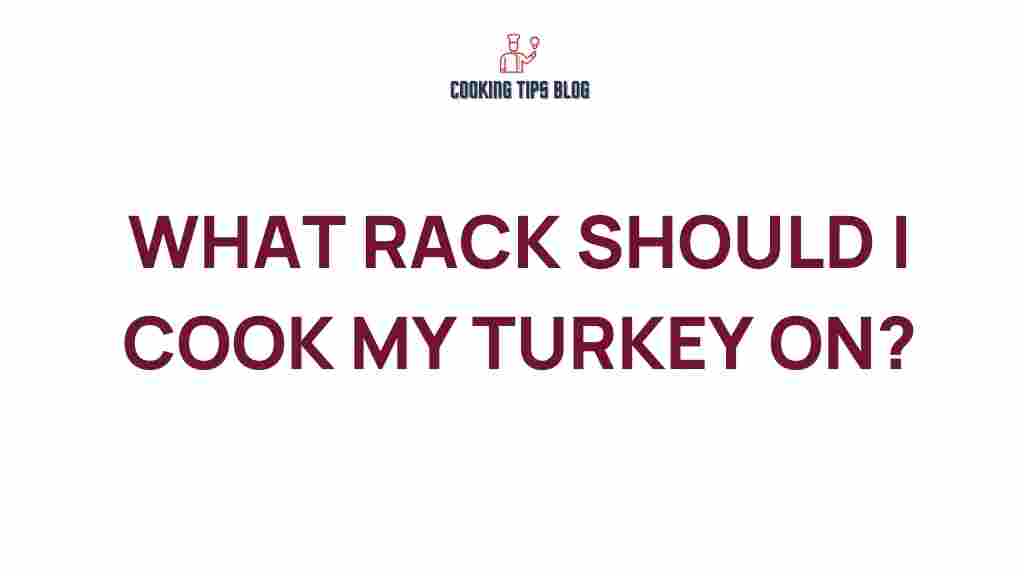What Rack Should You Cook Your Turkey On? The Ultimate Guide to Turkey Cooking Rack
When it comes to preparing a delicious turkey, the right cooking rack can make all the difference. Whether you’re planning for Thanksgiving or a family gathering, understanding the various options available for a turkey cooking rack is essential for achieving that perfectly roasted bird. In this ultimate guide, we’ll explore the best types of racks, how to choose the right one, and tips for optimal cooking results. Let’s dive in!
Why Use a Turkey Cooking Rack?
A turkey cooking rack elevates your turkey off the bottom of the roasting pan. This elevation is crucial for several reasons:
- Even Cooking: A rack allows hot air to circulate around the turkey, promoting even cooking.
- Better Browning: By elevating the turkey, it helps achieve a crispy, golden-brown skin.
- Easy Basting: A rack makes it easier to baste the turkey, ensuring that all parts of the bird are flavorful and moist.
- Draining Fat: Elevation helps in draining excess fat into the roasting pan, making for less greasy meat.
Now that we understand why a turkey cooking rack is important, let’s explore the different types available on the market.
Types of Turkey Cooking Racks
Choosing the right turkey cooking rack depends on your cooking style and the equipment you have. Here are the most common types:
1. V-Shaped Racks
V-shaped racks are designed to cradle the turkey securely and are ideal for holding larger birds.
- Pros: They provide stability and can often hold multiple sizes of turkeys.
- Cons: They can take up more space in the oven.
2. Flat Racks
Flat racks are simple and versatile, allowing the turkey to rest flat against the rack.
- Pros: They are easy to store and provide a good surface area for smaller birds.
- Cons: They may not provide as much stability for larger turkeys.
3. Adjustable Racks
These racks can be adjusted to fit different sizes of turkeys.
- Pros: They are very versatile and can be used for other meats too.
- Cons: They may be less sturdy if not adjusted correctly.
4. Disposable Foil Racks
Great for one-time use, disposable foil racks are very affordable.
- Pros: They are convenient and easy to clean up.
- Cons: They may not provide the best support for larger turkeys.
How to Choose the Right Turkey Cooking Rack
When selecting the perfect turkey cooking rack, consider the following factors:
- Size: Ensure the rack fits your turkey and your roasting pan.
- Material: Look for sturdy materials like stainless steel or heavy-duty aluminum.
- Ease of Cleaning: Choose a rack that is dishwasher safe or easy to wash by hand.
- Stability: Make sure the rack can securely hold the weight of the turkey without tipping over.
Step-by-Step Guide: How to Use a Turkey Cooking Rack
Using a turkey cooking rack is simple, but following these steps will ensure the best results:
Step 1: Prepare the Rack
Before placing your turkey on the rack, ensure it is clean and dry. If using a V-shaped rack, position it in the center of your roasting pan.
Step 2: Season Your Turkey
Season your turkey as desired. You can use a dry rub, marinade, or simply salt and pepper.
Step 3: Place the Turkey on the Rack
Carefully lift the turkey and place it breast-side up on the cooking rack. Ensure it sits securely.
Step 4: Insert a Meat Thermometer
For the most accurate results, insert a meat thermometer into the thickest part of the turkey’s breast without touching the bone.
Step 5: Roast the Turkey
Place the pan with the turkey rack in the preheated oven. Follow your recipe for specific cooking times and temperatures.
Step 6: Baste the Turkey
Every 30-45 minutes, baste the turkey with its own juices or additional marinade for moisture and flavor.
Step 7: Check the Temperature
Once you reach the recommended cooking time, check the internal temperature. The turkey is safe to eat when it reaches 165°F (74°C).
Troubleshooting Common Issues with Turkey Cooking Racks
Even with the best preparation, you may encounter some issues. Here are common problems and solutions:
Problem 1: Turkey is Not Browning
If your turkey isn’t browning, try:
- Increasing the oven temperature for the last hour of cooking.
- Basting the turkey more frequently.
Problem 2: Turkey is Sticking to the Rack
If your turkey is sticking, consider:
- Applying non-stick spray or oil to the rack before placing the turkey.
- Using a rack with a non-stick coating.
Problem 3: Turkey is Overcooked
If your turkey is overcooked, consider:
- Using a meat thermometer to check for doneness earlier in the cooking process.
- Covering the turkey with foil if it starts to brown too quickly.
Conclusion
Choosing the right turkey cooking rack is essential for a successful roasting experience. By understanding the different types of racks and following the steps outlined in this guide, you can ensure that your turkey is not only cooked perfectly but also looks stunning for your holiday table. Whether you prefer a V-shaped rack for stability or a flat rack for simplicity, the right choice will help you achieve a beautifully roasted turkey that your family and friends will rave about.
For more cooking tips and delicious recipes, check out our cooking resources. And for further reading on turkey preparation techniques, visit this helpful external guide.
This article is in the category Tools and created by Cookingtipsblog Team
